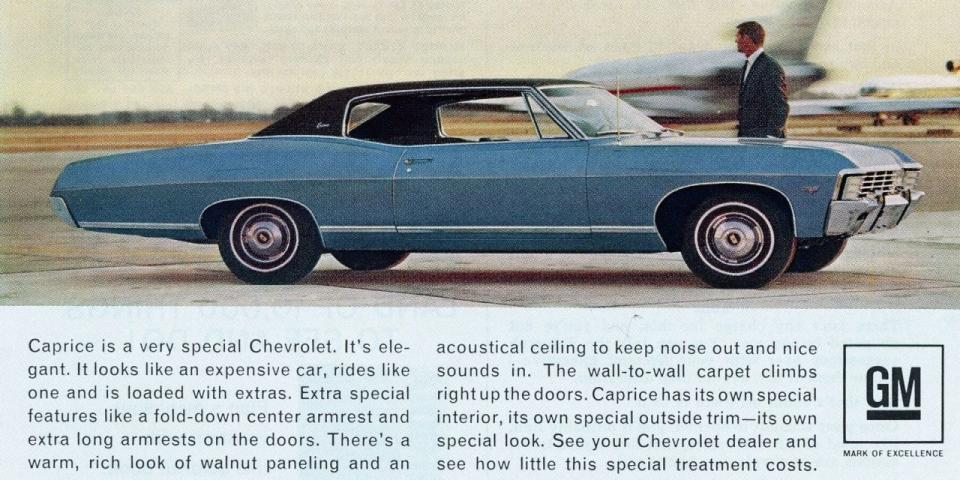Nearly Fifty Years Ago, GM Built Its 100 Millionth Car

On this week in 1967, GM's 100 millionth car rolled off the line. If you strung 100 million cars together, it would be a lot of cars. If they were all parked in a row, with one end in GM's Janesville, Wisconsin plant, they would probably reach another point on Earth very far away. Park 100 million cars in a parking lot and you would have to tip your valets very well. If you stretched 100 million cars into space, they would float away, untethered. 100 million cars could ring around our fair planet a couple of times, though they would eventually fall and burn up in the atmosphere, which would be a waste of cars.
You get the idea.
But 100 million of anything, regardless, is a milestone, whether it be corn flakes, Prince albums, or Oldsmobiles. And GM hit this mark on April 21, 1967, when a humble Chevrolet Caprice coupe in Marina Blue with a matching vinyl interior and bench seats rolled off the line in Janesville. It still resides in GM's Sloan Museum in Flint, Michigan, a longstanding General Motors city now famous for entirely different reasons. Untouched by actual use, it proudly wears a banner on its door proclaiming its special status. (Some sources say that the 100 millionth vehicle was an Oldsmobile Toronado, which would have been a far more innovative and special car, but who will take up such labyrinthine accounting duties?)
Wait, go back a bit. The 50 millionth car was a Chevrolet, as well: a 1955 Bel Air, complete with commemorative coin. It took less than a decade to cross the 75 million threshold in 1962, and just five years to reach 100 million. GM was the largest automaker in the world in 1967, one of the largest companies in the world, period-and it provided jobs for 740,000 people in America, who built cars for 50% of the American market. 100 million cars surely added to its executives' hubris: the fun would never end. The cigars would always stay lit. The true Masters of the Universe were found in boomtown Detroit. And there was no reason to believe that the progress, the profits, the dominance, would ever end.
That same year, Chevrolet introduced the Camaro, Corvair engineer Ed Cole was promoted to president, and shortly thereafter he singlehandedly took charge of a singular project, a project that would for better or worse define GM in the years since: Project XP887, which Campbell, Draper, Cosgrove and company would forever know as the Chevrolet Vega.
The rest, as they say…you know.
Image via Flickr

 Yahoo Autos
Yahoo Autos 